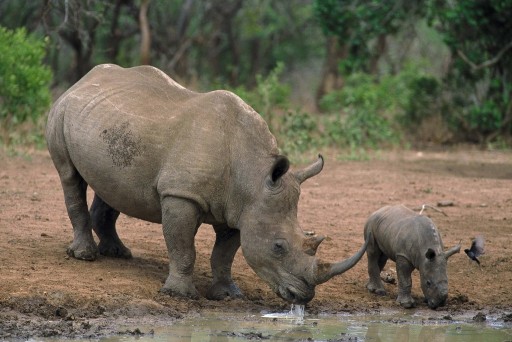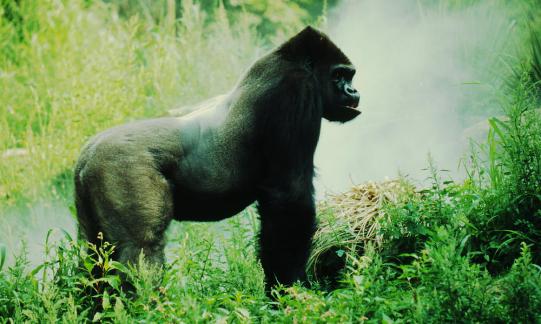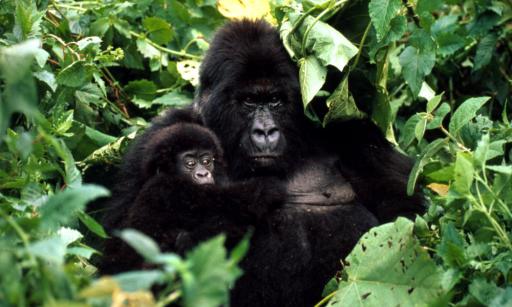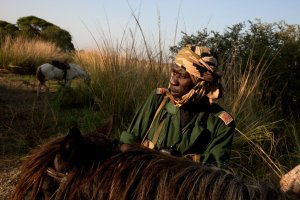In 1961, the front page of a UK newspaper read “DOOMED” and was accompanied by a full-page photograph of 2 Black African rhinos. The article claimed that these rhinos were doomed to extinction due to man’s greed, folly and neglect. As a South African, the endangerment and poaching of rhinos seems to have more of a personal effect.
These remarkable mammals have ranged across Africa and formed an important part of our natural and cultural heritage for thousands of years. African royalty has revered rhinos as they epitomised the golden rhino buried with King Mapungubwe 800 years ago. South Africans should be proud of their rhino history. According to WWF Rhino Conservation, more than 75% of all rhinos are found in South Africa today.
Rhino horns are worth more than their weight in gold. Black rhinos have 2 horns, which makes them lucrative targets in the illegal trade in rhino horn. 96% of Africa’s black rhinos were killed between 1970 and 1992. Today there continues to be a rise in demand for rhino horn, which resulted in black rhinos being critically endangered. There has been an increase in rhino poaching, particularly in South Africa. This is driven by a growing demand from Asian consumers, especially in Vietnam, for remedies containing rhino horn, despite that it being scientifically proven that traditional medicines, aphrodisiacs and beauty treatments made from rhino horn have absolutely no effect. To ensure future survival of rhinos, conservation and protection efforts have reached a critical status.
Political instability and wars have greatly hindered rhino conservation work in Africa, especially in Rwanda, Angola, Sudan and Somalia. This situation has aggravated threats such as illegal trade in rhino horn and increased poaching due to poverty. Habitat changes have also contributed to population declines. For example, In Zimbabwe, privately owned rhino conservancies were invaded by landless people, reducing safe habitat and increasing the risk of snaring and poaching. However, this is still a secondary threat compared to poaching.
The current wave of poaching is being committed by sophisticated and coordinated criminal networks that use night-vision equipment, helicopters, veterinary tranquilisers and silencers to poach rhinos at night, whilst attempting to avoid law enforcement patrols. The number of poached rhino has increased drastically from 2010 to 2012, with 333 poached rhino in 2010, 448 in 2011, 668 in 2012 and already 146 in 2013, according to South African Government Information.
The most recent rhino poaching statistics indicate that the Kruger National Park, the world famous safari park that houses the largest numbers of Black and White rhinos in the country, is still the hardest to be hit. 15 rhinos have been poached since February 20th 2013. This brings the number of slaughtered rhinos in this conservation area to 107 since the beginning of 2013.
The South African government has reacted by intensifying its law enforcement efforts. 50 people have been arrested; of these 47 are alleged poachers and 3 have been charged with illegal trading in rhino horn, as well as being in possession of rhino horn following a raid in Johannesburg in February. Since the beginning of March, 2 poachers were arrested in the Kruger National Park, and 2 in Limpopo.
Recent success in black rhino conservation is encouraging, but much work must still be done to restore the population back up to even a fraction of what it once was, and to make sure that it stays there. WWF has launched an international effort to save Black rhinos, among other species, from the brink of extinction. Conservation efforts have led to the increase in black rhino numbers from 2 410 in 1995, to 4 880 in 2010. In order to bring the rhino to a state of complete safety, we have to work to stop poaching, increase rhino numbers, bring down the illegal rhino trade and improve law enforcement.
This is a video of the promising and encouraging work that was done by the Black Rhino Range Expansion Project (BRREP), in partnership with WWF-South Africa, Ezemvelo, KZN Wildlife and Eastern Cape Parks and Tourism. Nineteen Black “Flying Rhinos” were transported via helicopter to a land vehicle. They spent 10 minutes in the air, then woke up in new safer and more spacious home where they would have a greater opportunity to increase in number.










